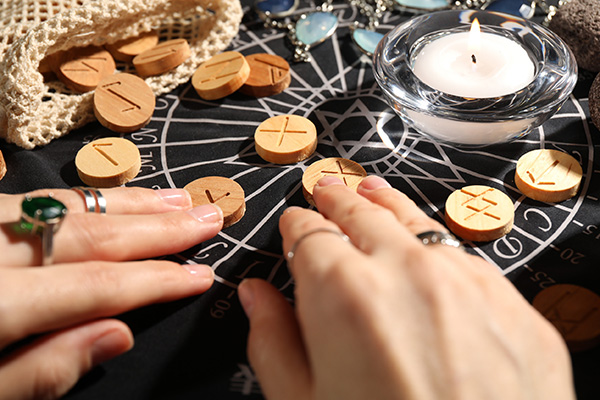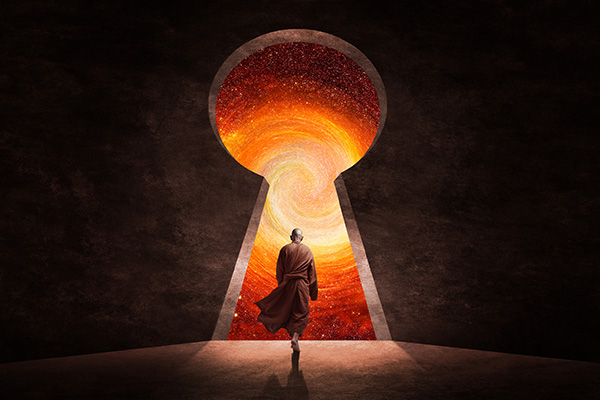What to Anticipate in the Rune Prediction for the Upcoming Solar Year 2025
 With the Sun transitioning into Aries, we usher in a fresh solar year rich with change, advancement, and empowerment. The metamorphosis to Aries heralds new beginnings, revitalized energy, and the bravery to act.
With the Sun transitioning into Aries, we usher in a fresh solar year rich with change, advancement, and empowerment. The metamorphosis to Aries heralds new beginnings, revitalized energy, and the bravery to act.
Aries, the inaugural sign of the zodiac, encapsulates the bold spirit of initiation, marking a moment to seize new opportunities and channel our personal strength.
This phase presents a cosmic summons to pursue fresh starts, synchronize with the tide of change, and leap forward with confidence.
The vigor of Aries, charged with renewed enthusiasm and resolve, motivates us to articulate clear goals, undertake transformative projects, and advance with steadfast assurance.
Whether we are launching new initiatives, encouraging personal development, or seeking clarity about our life’s course, Aries equips us with the bravery to traverse life’s changes purposefully.
To gather insights regarding the collective energy shaping our upcoming journey, I consulted the timeless wisdom of the runes. The four runes I drew – Raidho, Laguz, Uruz, and Kenaz – unveil a rich narrative.
Raidho speaks to movement and the journey of life; Laguz reflects emotional flow and intuition; Uruz symbolizes inner resilience and vitality; and Kenaz lights the way ahead with inspiration and creativity.
Collectively, these runes urge us to greet change with tenacity and to embrace the transformative season unfolding before us.
Another year awaits us like an uncharted page, an unspent coin, an untouched path. The stories we will create, the treasures we will uncover in exchange for our time, and what we discover along the way is largely dependent on our actions ~ Esther Baldwin York
Raidho – The Journey Begins
The foremost rune drawn for this solar year is Raidho, the rune of movement, travel, and the unfolding of fate. This heralds a potent and propitious start, indicating that 2025-2026 will be a period of forward motion. Raidho signifies the way forward, aligning us with our authentic destiny. It frequently appears during times of remarkable transitions, whether through physical travels, shifts in careers, lifestyle adjustments, or deep spiritual awakenings.
On a personal level, Raidho urges us to trust our journey, even when the complete path is not yet visible. Some may sense an inner yearning for a new chapter in life – a new job, changes in relationships, or a relocation. Others may find a shift in viewpoint, feeling attracted to new concepts, spiritual discoveries, or a developing sense of purpose.
At a global level, this rune indicates movement within societal dynamics—political, economic, and technological transformations that are reshaping our global navigation. It can suggest advancements in transportation, border relations, or leadership transitions that affect global trajectories. The principal lesson of Raidho is to remain aligned with our internal navigational compass; when we act in accordance with our truth, the appropriate path will always materialize beneath us.
Laguz – The Flow of Emotions & Intuition
Following Raidho, we encounter Laguz, the rune of water, feelings, and intuition. This rune indicates that the journey ahead is not solely physical and external, but also profoundly internal. Laguz encourages us to embrace fluidity, allowing emotions and intuition to steer our choices rather than resisting the organic currents of life.
This year, emotional intelligence will play a pivotal role. While logic and planning will always hold significance, this cycle invites us to trust our emotional insights. Those who suppress their feelings or disregard their inner wisdom may struggle against the current. Instead of holding tightly to expectations, the energy of Laguz promotes surrendering and trusting where life leads us.
On a collective front, Laguz suggests a heightened acknowledgment of mental health, spirituality, and emotional well-being. Discussions surrounding these themes may flourish as society leans toward comprehensive explorations of healing, trauma, and personal evolution. Furthermore, we may witness water-related issues springing to the forefront, whether through environmental challenges like rising sea levels or advancements in ocean and climate research.
Uruz – Strength & Vitality
Following the flowing energy of Laguz, we greet the grounding influence of Uruz. Uruz is the rune of raw power, vigor, and resilience. It embodies the untamed force of nature and the primal energy propelling us to survive and flourish. This rune reassures us that the years 2025-2026 will be marked by personal empowerment and strength.
For many, this year will usher in significant physical and personal transformation. Uruz invites us to enhance our bodies, minds, and spirits. It’s an opportune time to focus on health, cultivate new habits, and assume leadership roles. If you’ve been postponing an essential objective, Uruz indicates that now is the moment to act. Yet, this rune doesn’t guarantee smooth victories—it demands persistence, discipline, and a readiness to confront challenges.
Another critical aspect of Uruz is limitation. This rune teaches us that true strength encompasses not only power but also the wisdom of when to decline, when to step back, and when to conserve our energy. Overexertion might lead to burnout; hence, while this year beckons action, it equally calls for balance.
On a broader scale, Uruz may signify shifts in global sectors related to health, agriculture, and natural resources. It may also point to a phase of rebuilding, whereby communities concentrate on reinforcing foundations and surmounting past vulnerabilities.
Kenaz – Enlightenment & Breakthroughs
Finally, we arrive at Kenaz, the rune of enlightenment, inspiration, and knowledge. Following a year of movement (Raidho), emotional depth (Laguz), and personal empowerment (Uruz), Kenaz ensures we emerge more knowledgeable, creative, and with a clearer vision for our future.
Kenaz represents the internal flame—the ignition of ideas, artistic inspiration, and sudden insights. It heralds breakthroughs, revelations of hidden truths, and newfound clarity. This rune is particularly beneficial for artists, writers, and visionaries, as it propels creative pursuits and the quest for knowledge.
For those who have felt stranded or lost in obscurity, Kenaz illuminates the necessary light to navigate ahead. It invites us to embrace learning, uncover latent talents, and resolve lingering challenges. Additionally, it is a rune of mentorship, suggesting that wisdom circulates, whether through teachers, guides, or ancestral knowledge.
On a collective plane, Kenaz might indicate significant scientific or technological breakthroughs, particularly in the realms of light, energy, and communication. Anticipate new discoveries that will transform our comprehension of the universe.
A Year Of Growth, Strength & Enlightenment
The energy of the solar year 2025-2026 is characterized by movement, intuition, strength, and enlightenment. The runes outline a distinct trajectory:
Raidho invites us to welcome change and place faith in the journey ahead.
Laguz urges us to connect with our emotions and flow with the natural rhythm of life.
Uruz endows us with the strength and perseverance to triumph over barriers and reclaim our power.
Kenaz guarantees that by the culmination of this cycle, we will have attained wisdom, inspiration, and a profound sense of clarity.
This is not a time for stagnation. It is a year of action, bravery, and transformation. The energies present compel us to trust our instincts, tackle challenges head-on, and develop resilience. If we approach the coming period with openness and resolve, life will respond with the energy and insight required for our success.
As we embark on this new solar year, may we traverse our paths with wisdom, strength, and enlightenment. May it be a time of profound growth and success for each of us. May our solar year be filled with blessings and prosperity.
|
Runa is a reader with exceptional gifts and a continual source of support for others and her community. She possesses spiritual, artistic, and creative talents, enriching her spirit through selfless contributions to incarcerated teens and her reading practice in Germany and with clients around the globe. A Rune specialist, a Reiki Master, and a talented oracle reader, she is always accompanied by her Northern Light Guides during every reading. Alongside her empathetic, straightforward insights and non-judgmental readings, Runa radiates positive energy that alleviates burdens and reveals a pathway to future ambitions. From a young age, she could sense the energies surrounding her, but her exploration of ancient runes and symbols opened avenues for answers to assist and encourage others in their paths. Runa has read for over 20,000 individuals from diverse backgrounds, including numerous corporate clients. She operates her reading practice in Germany, sharing her life with her husband and cherished cat, “Monster.” For over 15 years, she has inspired, enriched, and empowered the lives of adults and youth, helping them to fearlessly embrace and creatively express their aspirations. If you’re interested in a reading from this remarkable Rune goddess, you can connect with Runa at PsychicAccess.com |
Anticipating What the Rune Forecast Holds for the New Solar Year 2025
As we say goodbye to the previous year and welcome the new one, many ponder what lies ahead. One ancient divination method that can illuminate what’s to come is the use of runes. Runes, an ancient script employed by the Norse and Germanic tribes, have been utilized for centuries to seek guidance and comprehend the surrounding world. In this article, we will examine what to expect in the rune forecast for the new solar year 2025.
Before exploring the specific runes and their interpretations, it’s essential to grasp the overall energy and themes likely to dominate the year 2025. Each year carries its unique vibration, shaped by celestial alignments and global occurrences. The year 2025 is anticipated to be a time of transformation and development, as humanity continues to navigate significant changes on both personal and global scales.
Now, let’s delve into some of the key runes that may surface in the forecast for the new solar year 2025:
1. Ansuz (Communication): Ansuz signifies the power of communication and the exchange of ideas. In 2025, expect a robust emphasis on effective communication at both individual and communal levels. This rune encourages us to articulate our thoughts clearly, listen closely, and seek understanding in our interactions with others.
2. Raidho (Journey): The rune Raidho denotes journeys, whether physical or metaphorical. In 2025, opportunities for travel, exploration, and personal development may arise. This rune reminds us to embrace new experiences and be receptive to the lessons they bring.
3. Gebo (Gift): Gebo embodies the concept of giving and receiving. Expect 2025 to focus on nurturing harmonious relationships and cultivating generosity. This rune inspires us to share our talents and gifts with others, creating a beneficial ripple effect within our communities.
4. Ehwaz (Partnership): Ehwaz symbolizes the strength of partnership and collaboration. In 2025, teamwork and cooperation will be essential for achieving success. This rune serves as a reminder to appreciate others’ contributions and to work cooperatively towards shared objectives.
5. Perthro (Mystery): Perthro signifies the unknown and the mysteries of existence. In 2025, there may be unforeseen twists and turns, along with chances for personal reflection and spiritual growth. This rune encourages us to embrace uncertainty and trust in the unfolding of our journeys.
6. Inguz (Fertility): Inguz represents fertility, both literally and metaphorically. The year 2025 may herald a wave of creative energy and new beginnings. This rune encourages us to nurture passion and embrace the potential for growth and abundance.
It’s important to acknowledge that rune interpretations are subjective and can differ depending on individual circumstances. While the runes may provide insights and guidance, ultimately, each person must make their own choices and decisions.
In summary, the rune forecast for the new solar year 2025 points toward a year of transformation, growth, and opportunities. Effective communication, journeys, partnerships, and embracing the unknown will be pivotal themes. By maintaining an open mind and being receptive to the runes’ messages, we can navigate the forthcoming year with purpose and clarity. Continue reading

















